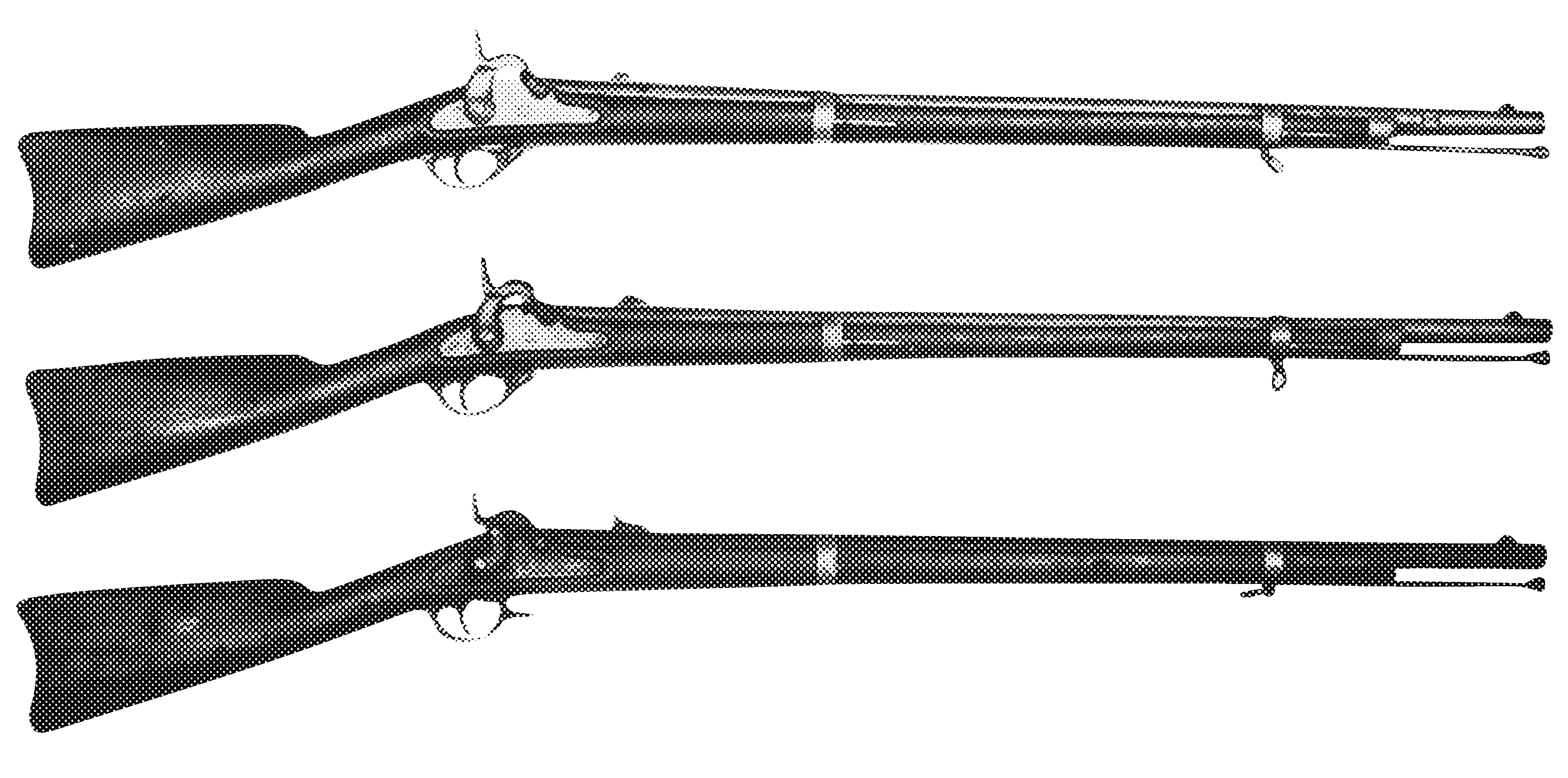Fayetteville Armory Rifles (Types I through IV)


Overall length 49.125"; barrel length 33"; caliber .58. Markings: on barrel, an eagle over "C.S.A./FAYETTEVILLE" forward of the hammer and date on rounded tail. "CSA" also found on buttplates; date on top of barrel; proofmarks (eagle head, "V" and "P" ) on left quarter of barrel near breech.
From 1862 to early 1865, Fayetteville Armory produced four variants of old U.S. M1855 rifle on machinery that had been lent to North Carolina by Virginia, after its capture in April 1861. Earliest 1862 production (Type I) utilized unmilled lockplates captured at Harpers Ferry and distinguished by having a "hump" (where the Maynard primer would have been milled) that extends to arc of hammer. Type II production utilized newly made locks received from Richmond during balance of 1862; they had a relatively low "hump" whose upper surface matched contour of stock. By end of 1862, Fayetteville was producing its own lock, the plate of which resembled U.S. M1861 rifle musket, but with a distinctive "S" shaped hammer. This lock distinguishes both Type III and Type IV production. All rifles made through 1863 continued to bear a saber bayonet lug on right side of barrel. In 1864, however, this was eliminated in favor of a triangular socket bayonet. Absence of the saber bayonet lug and re-modeled front sight distinguishes Type IV production. Because the barrel machinery went to Richmond, production at Fayetteville was continually hindered, seldom reaching more than 300 per month in three years that Fayetteville rifle was manufactured. (Note: Rarity of Type I production will usually generate a premium for that variant.)
From 1862 to early 1865, Fayetteville Armory produced four variants of old U.S. M1855 rifle on machinery that had been lent to North Carolina by Virginia, after its capture in April 1861. Earliest 1862 production (Type I) utilized unmilled lockplates captured at Harpers Ferry and distinguished by having a "hump" (where the Maynard primer would have been milled) that extends to arc of hammer. Type II production utilized newly made locks received from Richmond during balance of 1862; they had a relatively low "hump" whose upper surface matched contour of stock. By end of 1862, Fayetteville was producing its own lock, the plate of which resembled U.S. M1861 rifle musket, but with a distinctive "S" shaped hammer. This lock distinguishes both Type III and Type IV production. All rifles made through 1863 continued to bear a saber bayonet lug on right side of barrel. In 1864, however, this was eliminated in favor of a triangular socket bayonet. Absence of the saber bayonet lug and re-modeled front sight distinguishes Type IV production. Because the barrel machinery went to Richmond, production at Fayetteville was continually hindered, seldom reaching more than 300 per month in three years that Fayetteville rifle was manufactured. (Note: Rarity of Type I production will usually generate a premium for that variant.)
Antique
Excellent$0000
Fine$0000
Very Good$0000
Good$0000
Fair$0000
Poor$0000